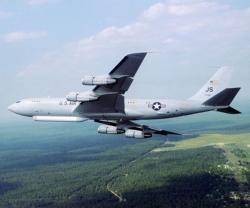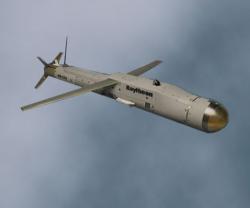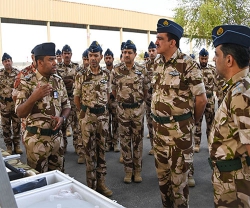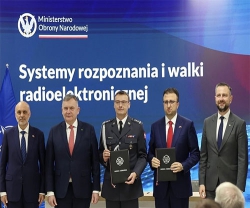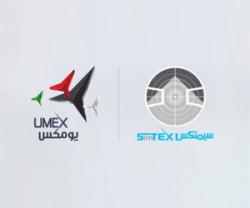Northrop Grumman Corporation (NGC), as the prime contractor, and Raytheon Company, as the infrared sensor payload provider, built the two STSS demonstrator satellites and ground station for the U.S. Missile Defense Agency (MDA).
Two STSS-specific goals for the Aegis BMD exercise were met:
- The pair of satellites collected tracking data that were used by the Ballistic Missile Defense System (BMDS) in real time to form a stereo track, and
- Simulation of an Aegis Remote Engagement Authorized (REA) interceptor launch based on the STSS stereo track that was routed to the Aegis 3.6.1 simulation lab.
“For the fourth time, the STSS demonstration satellites confirmed their ability to deliver accurate tracking data sufficient to launch an interceptor from an Aegis destroyer,” said David Bloodgood, STSS Program Manager for Northrop Grumman's Aerospace Systems sector in Redondo Beach, California.
The exercise demonstrated fire control elements of Aegis BMD 4.0.1, the second generation of the Aegis weapon system. The Aegis launch-on-remote exercise also involved the upgraded SM-3 Block 1B that incorporates an improved seeker and signal processor, allowing longer range acquisition and increased threat discrimination. The target was an Aegis Readiness Assessment Vehicle Type A, a threat-representative, unitary, short-range ballistic missile target.
This test supported the initial phase of MDA's Phased Adaptive Approach for missile defense in Europe that features deployments of increasingly capable sea- and land-based missile interceptors and a range of sensors to address regional ballistic missile threats to Europe and to U.S. forces deployed there.
Using sensors capable of detecting visible and infrared light, STSS-D serves as the experimental space layer of the BMDS. The program's mission objective is to provide accurate tracks of midcourse re-entry vehicles to the shooter.


